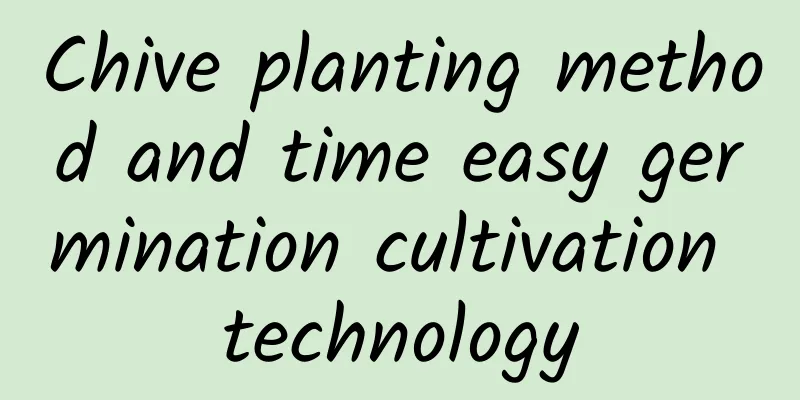When is the best time to plant coriander?

|
Coriander has a short growth cycle, usually only 30-60 days from sowing to harvesting. Coriander likes a humid environment but is not tolerant to waterlogging. The soil needs to be kept moist during the growing period, but waterlogging should be avoided to avoid root diseases. Let’s learn below: When is the best time to plant coriander? When is the best time to plant coriander? The planting time of coriander varies from region to region and has a certain degree of flexibility. Generally speaking, April and September each year are the golden periods for growing coriander in many areas. However, in southern regions with warmer climates, cilantro can be grown almost year-round. Coriander has strong adaptability and can tolerate high temperatures as well as grow in cold conditions, which allows it to be planted during the high temperatures of summer and overwintered in winter. In northern regions, the planting time of coriander is mostly concentrated from August to September, and the harvest period is in October. The Huanghuai and Haihe regions tend to sow around the Qingming Festival and the Autumnal Equinox. In the south, due to climatic conditions, the growing period of coriander is about 40 to 60 days, and it is suitable for planting almost all year round. Key points for growing coriander Land preparation: First, you need to make sure the land in your planting area is level, whether it's outdoors in a vegetable garden or in containers on your balcony. After leveling the land, water it in time according to the moisture of the soil to maintain appropriate moisture conditions. Before land preparation, base fertilizer, such as well-rotted farmyard manure, can be applied to provide necessary nutrients. Seed preparation: Coriander seeds purchased from the market can usually be sown directly. However, for self-retained seeds, it is recommended to soak the seeds before sowing to promote germination. Soaking the seeds in warm water at about 25°C for about 24 hours will help increase the germination rate. Sowing method: Coriander can be sown by broadcasting or furrow sowing. Broadcasting is to spread the seeds evenly on the ground and then cover them with a thin layer of soil. Furrow sowing involves making shallow furrows in the ground, sowing the seeds into the furrows, covering them with soil and lightly compacting them. Furrow sowing helps manage and promote even growth of cilantro. Water management: After sowing, if the soil is dry, water appropriately to promote germination. Be careful not to overwater to avoid waterlogging. Thinning: After the coriander seedlings emerge, thin them out according to the seedling density and remove the overcrowded seedlings to ensure that the remaining plants have enough space to grow. Field management: During the growth period of coriander, manual weeding is recommended and the use of chemical herbicides should be avoided. As for the use of pesticides and fungicides , it should be decided based on the actual occurrence of pests and diseases. In the absence of serious pests and diseases, cilantro usually only needs regular watering to grow healthily until harvest. In short, the best time to plant coriander should be determined according to local climatic conditions and seasonal changes to ensure healthy growth and optimal yield of coriander.
|
<<: When is the best time to plant lettuce?
>>: When is the best time to plant snow peas?
Recommend
How to add water to potassium dihydrogen phosphate for watering orchids (what is the role of potassium dihydrogen phosphate in watering flowers)
Period of use of potassium dihydrogen phosphate: ...
What crops are suitable for growing in Shaanxi? What are the main cash crops grown in Shaanxi?
Shaanxi is a northern temperate and subtropical a...
Characteristics of bayberry, bayberry ripening time
1. Features 1. Appearance characteristics: The ba...
When and how to change the soil for pomegranates
Pomegranate soil changing time For pomegranates, ...
Is Oxalis a four-leaf clover? What is the difference between Oxalis and four-leaf clover?
1. Not the same Oxalis and four-leaf clover are n...
When is the best time to water succulents? When is the best time to water them?
Succulent watering time It is most appropriate to...
How to prune Million Bells and how to quickly regrow them
1. How to trim 1. Pruning during the growing seas...
Carnation Flower Language
1. Gratitude and Respect The more common flower l...
Bougainvillea pictures
Bougainvillea Tips The morphological characterist...
What insects does bifenthrin kill?
Bifenthrin is a highly effective synthetic pyreth...
When does the pennywort bloom?
1. When to grow flowers This flower can be plante...
Steps of hydroponics
1. Cut branches When you first start hydroponics,...
Will bougainvillea die if its leaves fall off? Can I prune it if only the leaves fall off?
1. Will fallen leaves die? Different degrees have...
What fertilizer is best for copper coin grass
Fertilizer for copper coin grass The copper coin ...
What should you pay attention to when Clivia blooms?
1. Supplement fertilizer When the flower sword gr...









